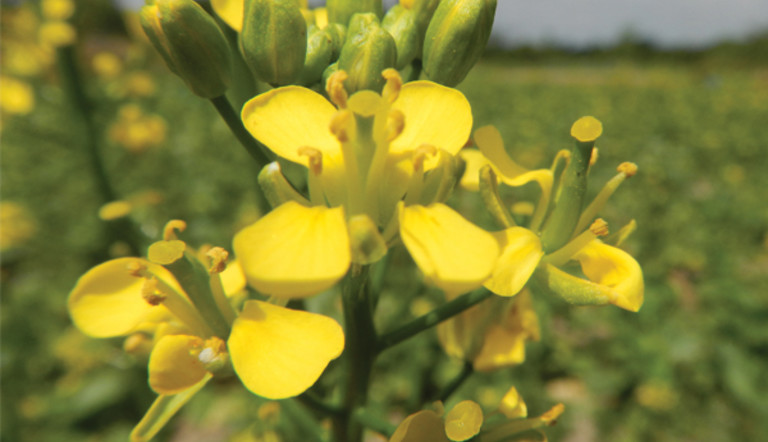
Pest Profile: Volunteer Canola
The fourth most common weed in Western Canada, volunteer canola is especially challenging to control in herbicide-tolerant crops like soybeans. It can be incredibly competitive, and its untreated seeds can increase disease and insect pressure in canola and non-canola rotations. Management solutions include reducing harvest losses, pre-seed burn-offs, and diversifying and lengthening crop rotations.
Pest Profile
October 11, 2021
6min read

TYPE
- Annual
- Broadleaf
IDENTIFICATION
Both the Brassica napus and Brassica rapa varieties of volunteer canola have erect stems that grow up to 3 feet tall and are bluish green in colour. B. napus leaves are dark green, smooth, hairless and sessile, while B. rapa leaves are lighter green, clasping and hairy on the underside of the petiole. Flowers are pale yellow, small and appear on the raceme.
CONTROL TIPS
- The vast majority of seed in the canola seed bank is eliminated in the first 2 years after canola is grown, so growing at least 1 and preferably 2 or 3 crops between each canola crop can greatly reduce the volunteer population.
- Canola Encyclopedia also recommends farmers leave canola seeds on the soil surface after harvest: “Delay fall tillage, if using, until a few weeks after harvest. That gives time for seeds to germinate in the fall (most of which will die through the winter) and for birds and insects to eat seeds.
- Scout rotation fields for volunteer canola that are not controlled by herbicide application. Early detection allows time for control before seed set.
- Apply herbicides early. Spraying volunteer canola at the 2 - 4 leaf stage is much more effective than at the 5 - 6 leaf stage.
REGISTERED HERBICIDES:
- 2,4-D Ester 7003
- BADGE®3
- DAVAI® 80 SL1
- DAVAI A PLUS™1
- DAVAI® Q PLUS®1
- EMPHASIS® + Glyphosate
- ESTEEM ALL IN™
- ESTEEM®
- FORCEFIGHTER® M
- FORCEFIGHTER ALL IN™
- INVOLVE® 50 WDG2 + Glyphosate
- OUTSHINE ALL IN™
- OUTSHINE®
- PHANTOM®240 SL1
- PRIORITY® 3+ Glyphosate
- PYTHON®
- RUSH® 243
- RUSH 24 ALL IN™3
- SQUADRON®4
- THRASHER®
- TOPLINE®3
1Non clearfield varieties
2Control with additional 2,4-D
3All Types
4Triazine resistant biotypes
Please read each label to determine which herbicide is appropriate for the crop affected and the timing of application.
Always read and follow label directions.